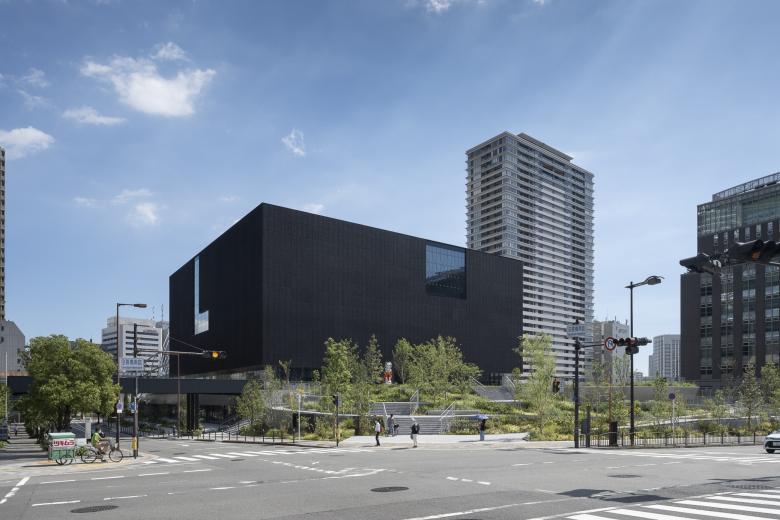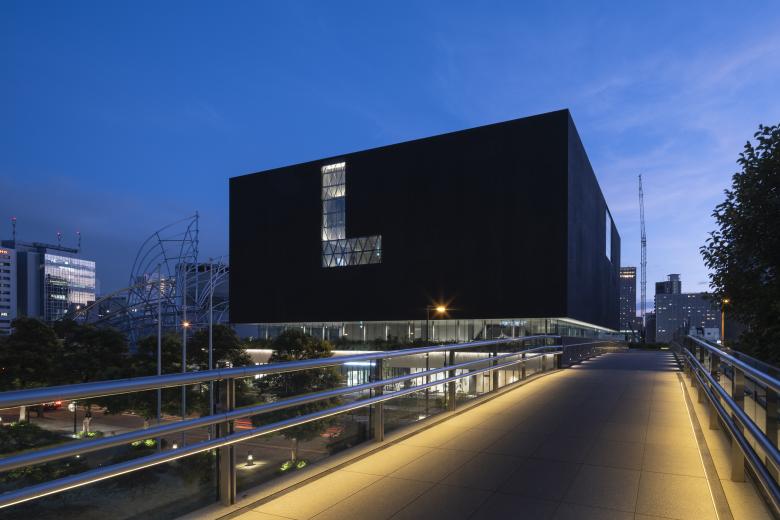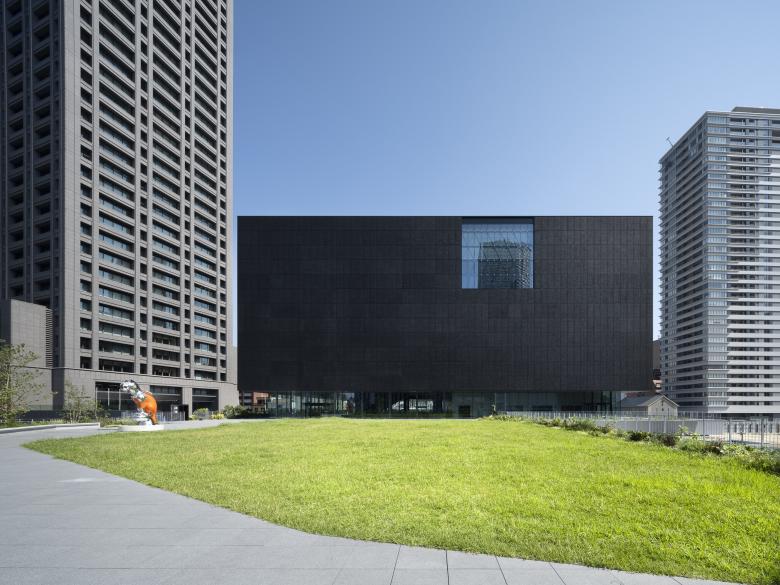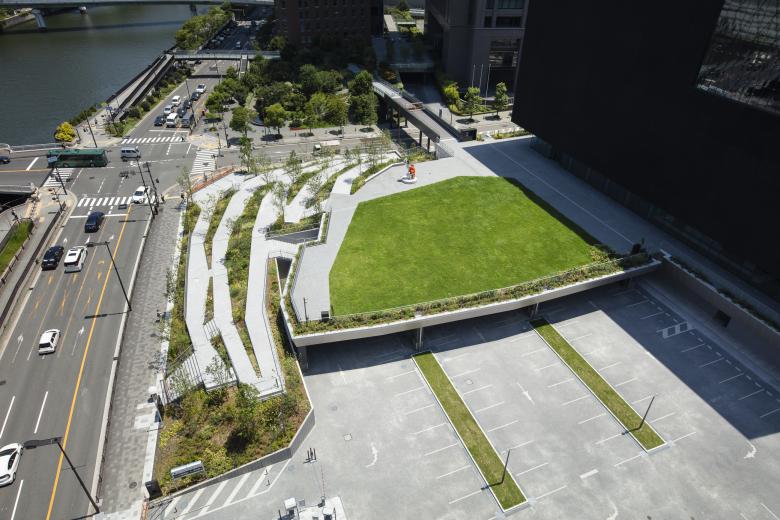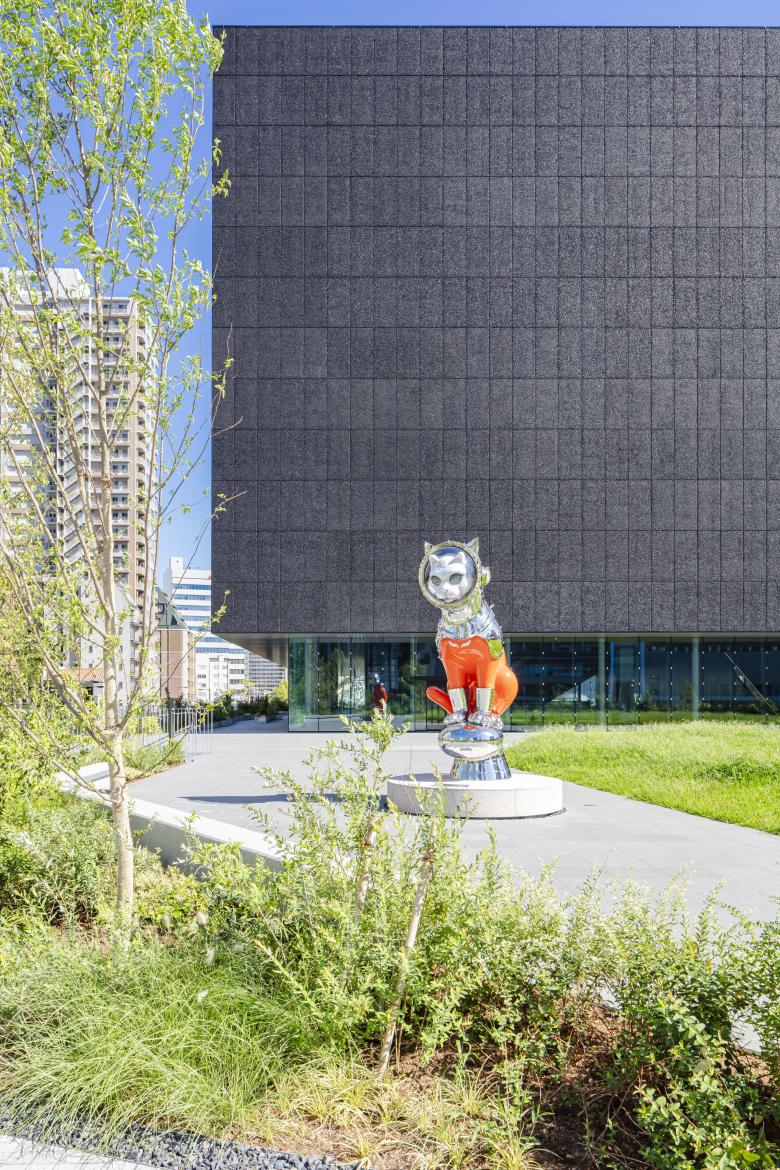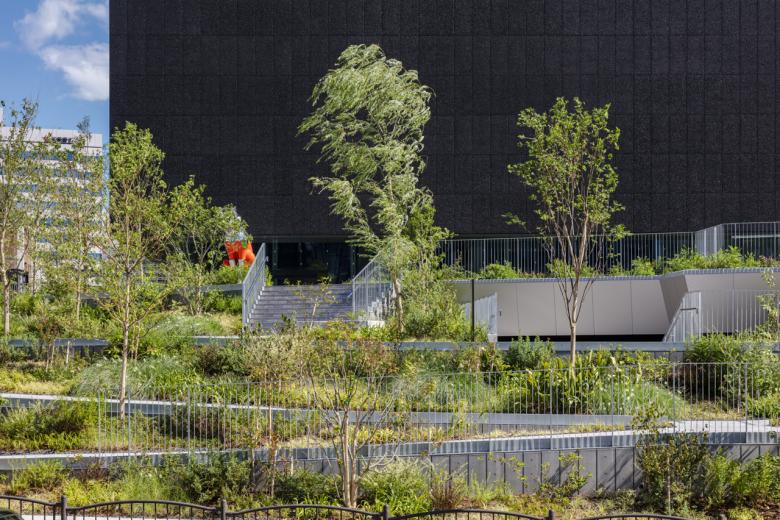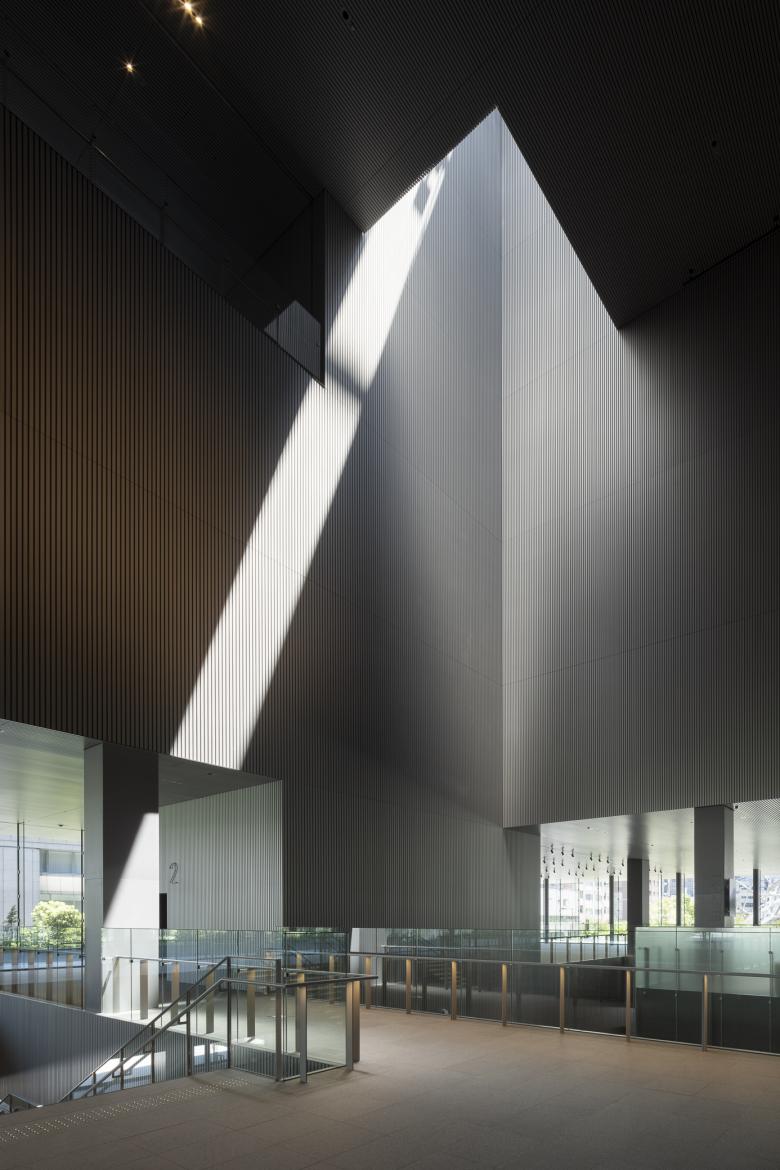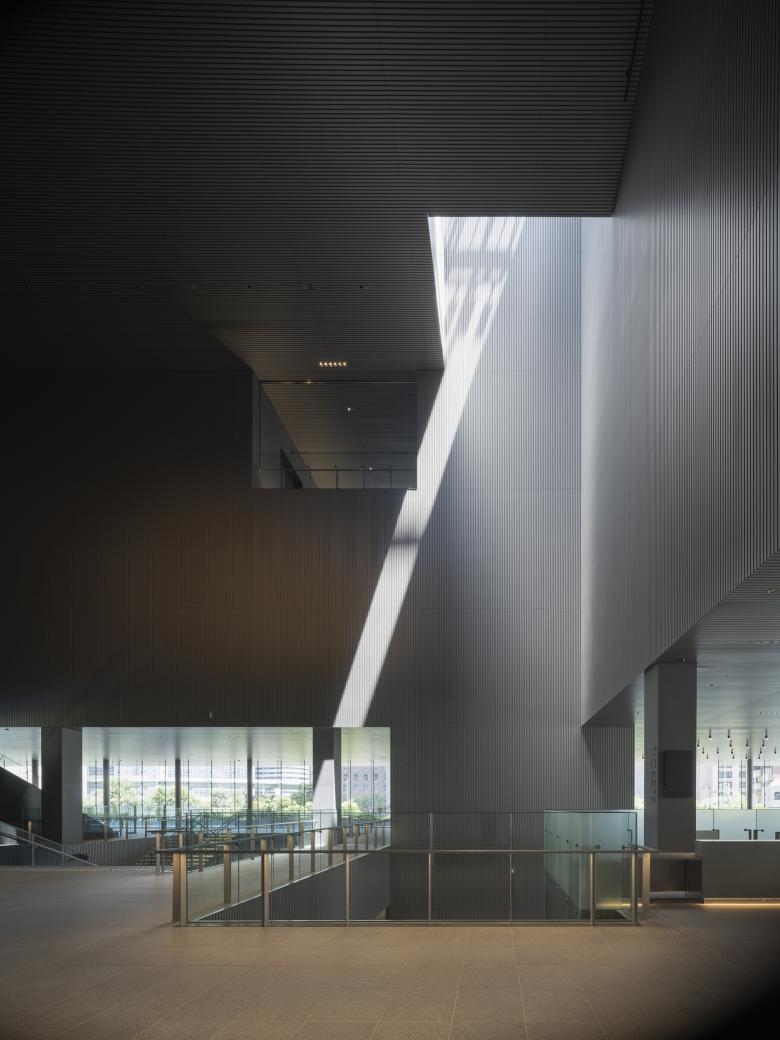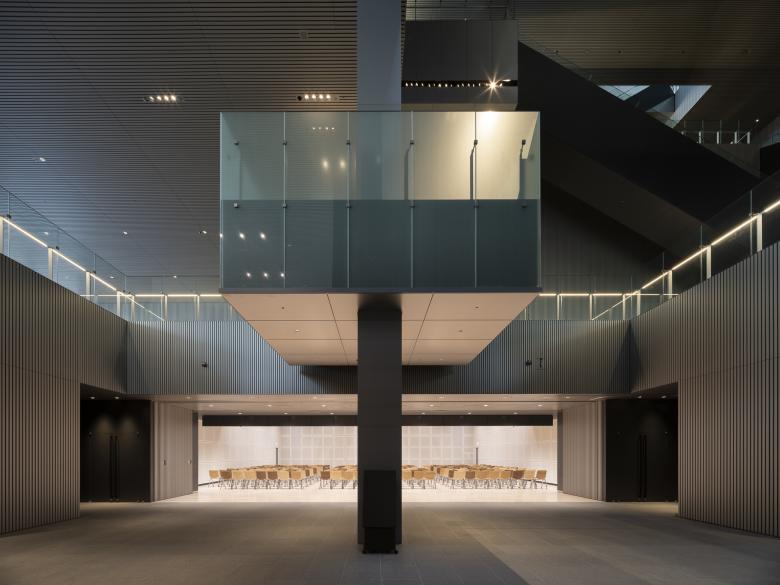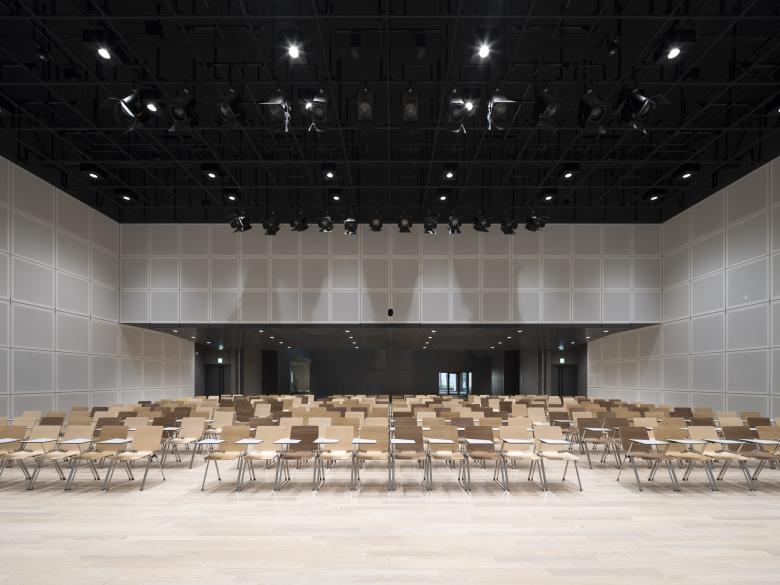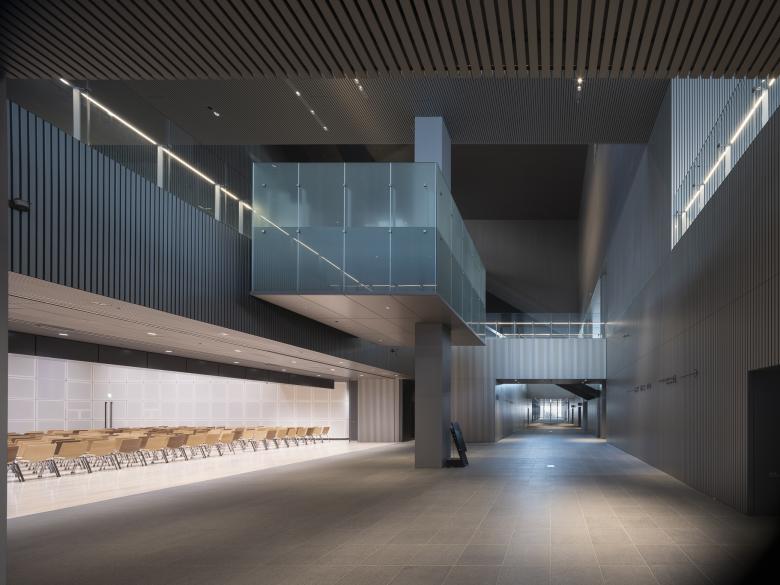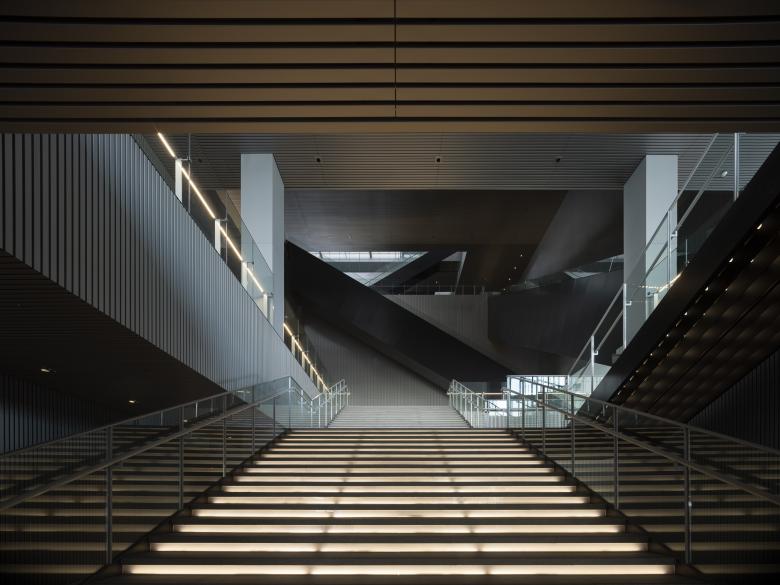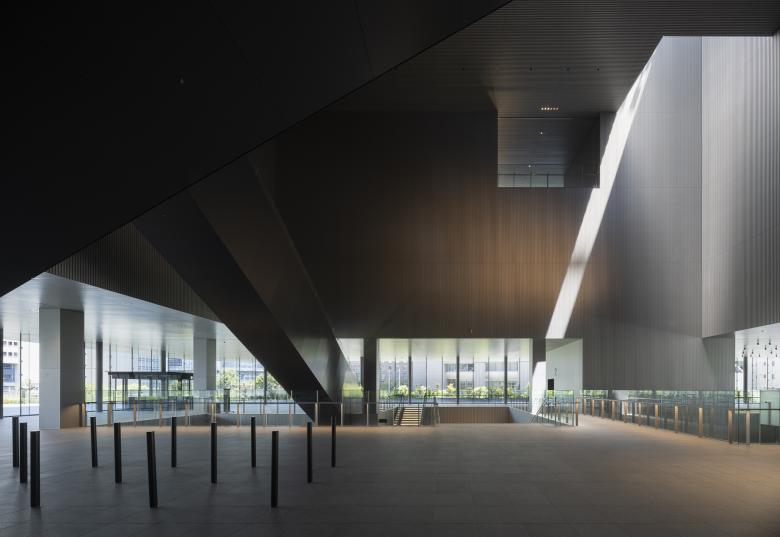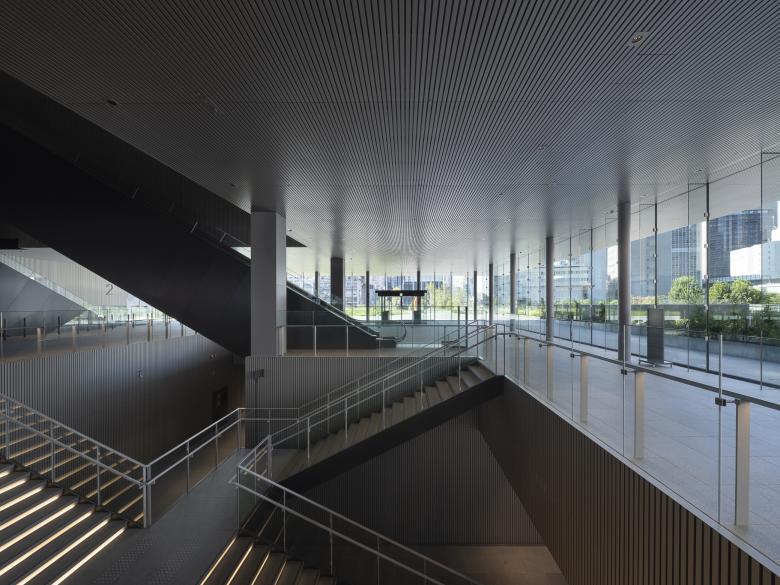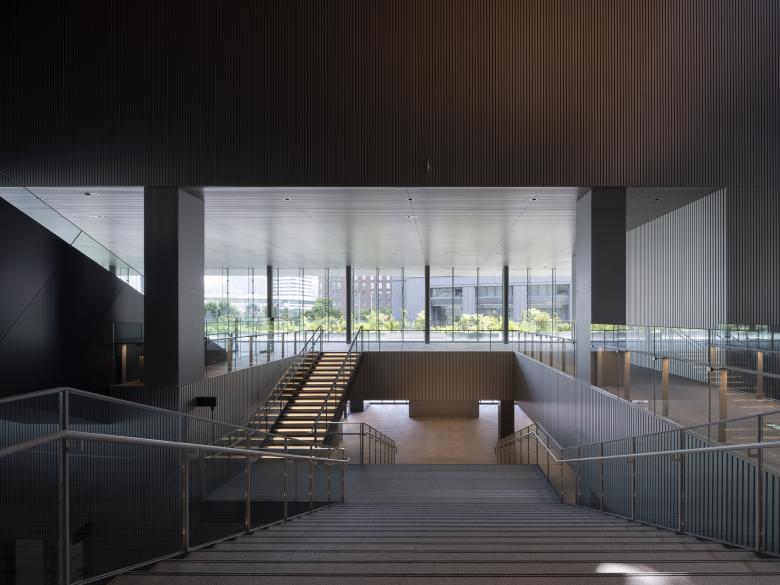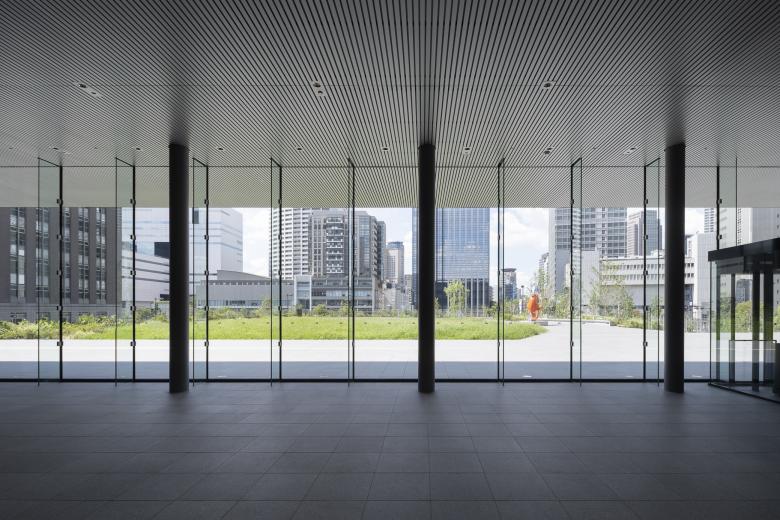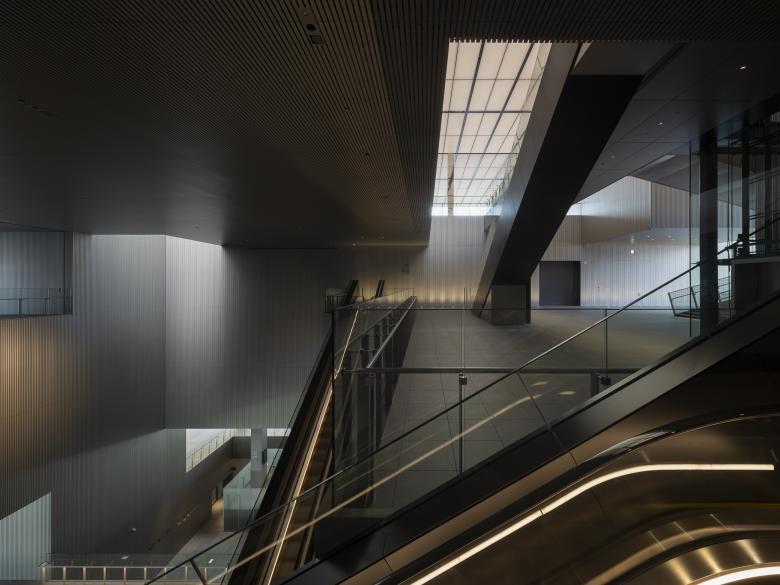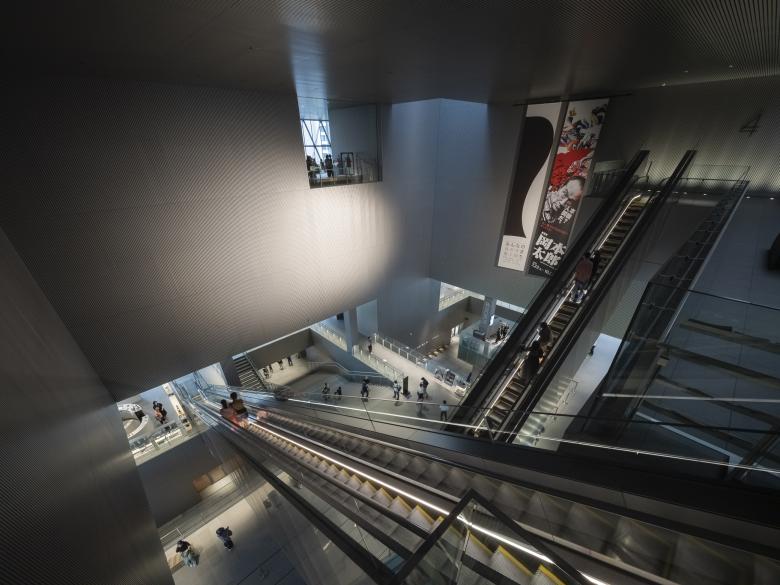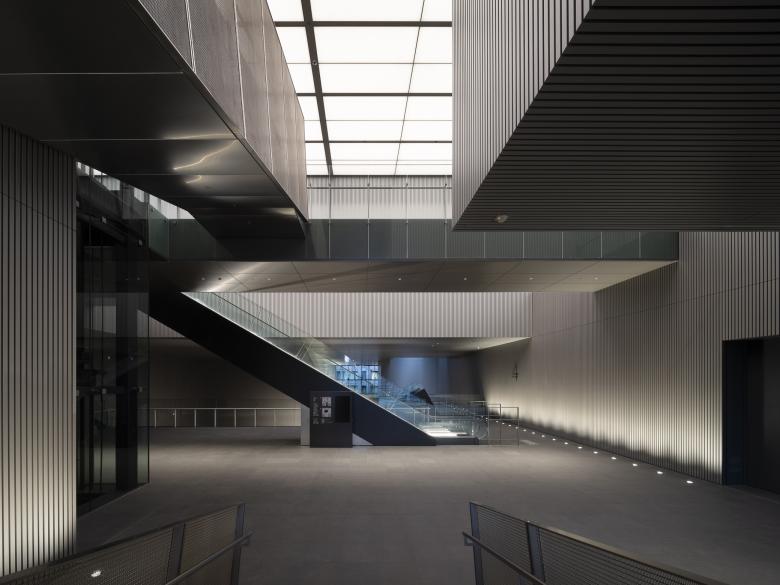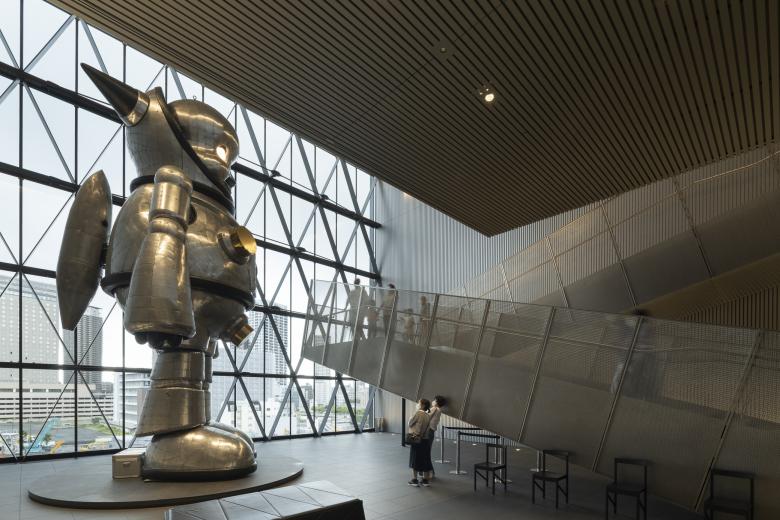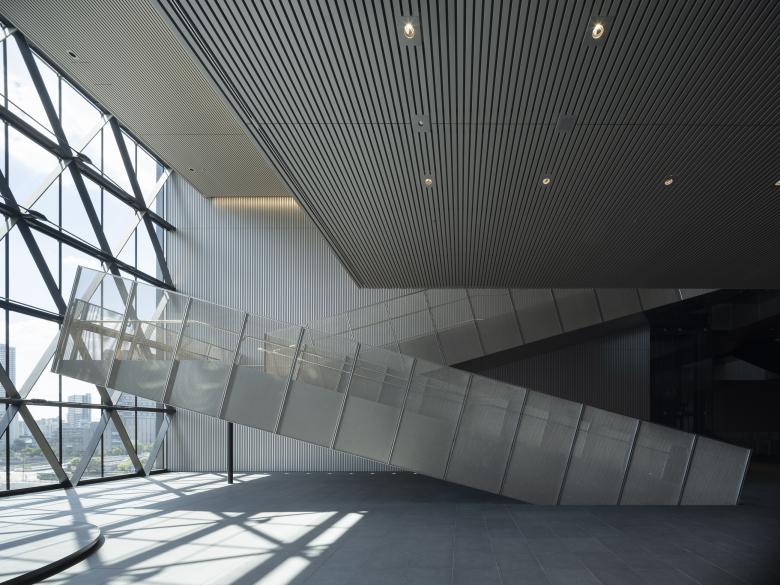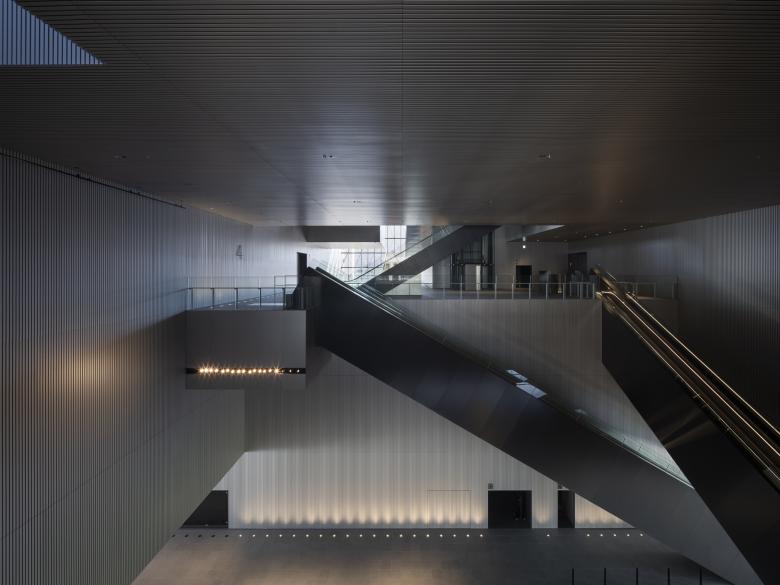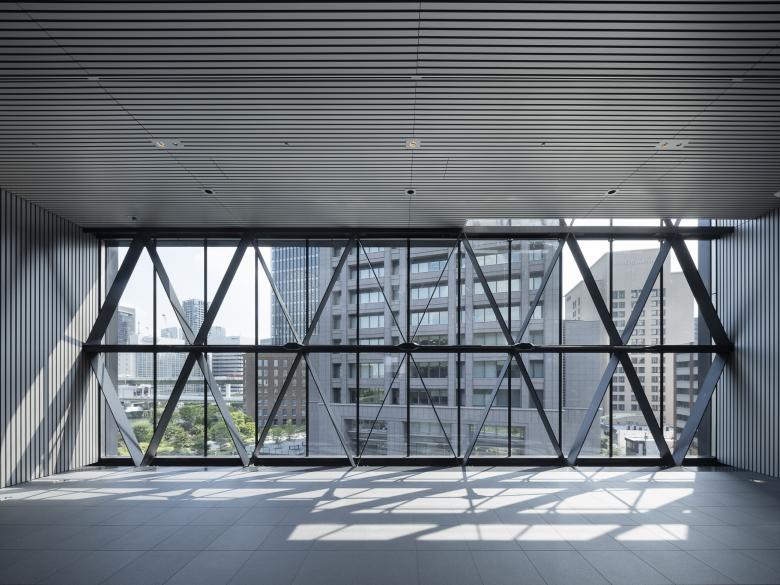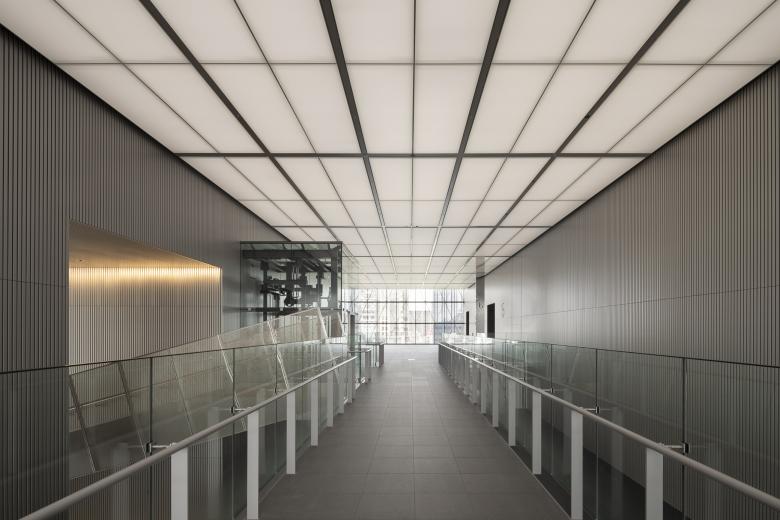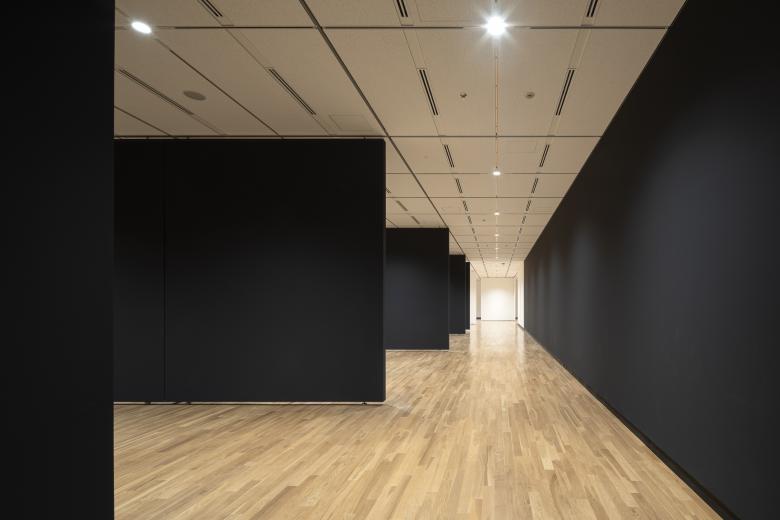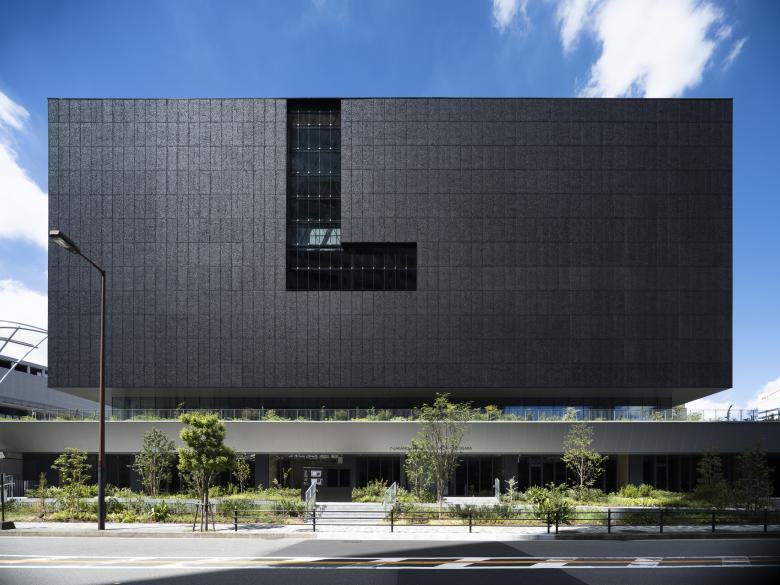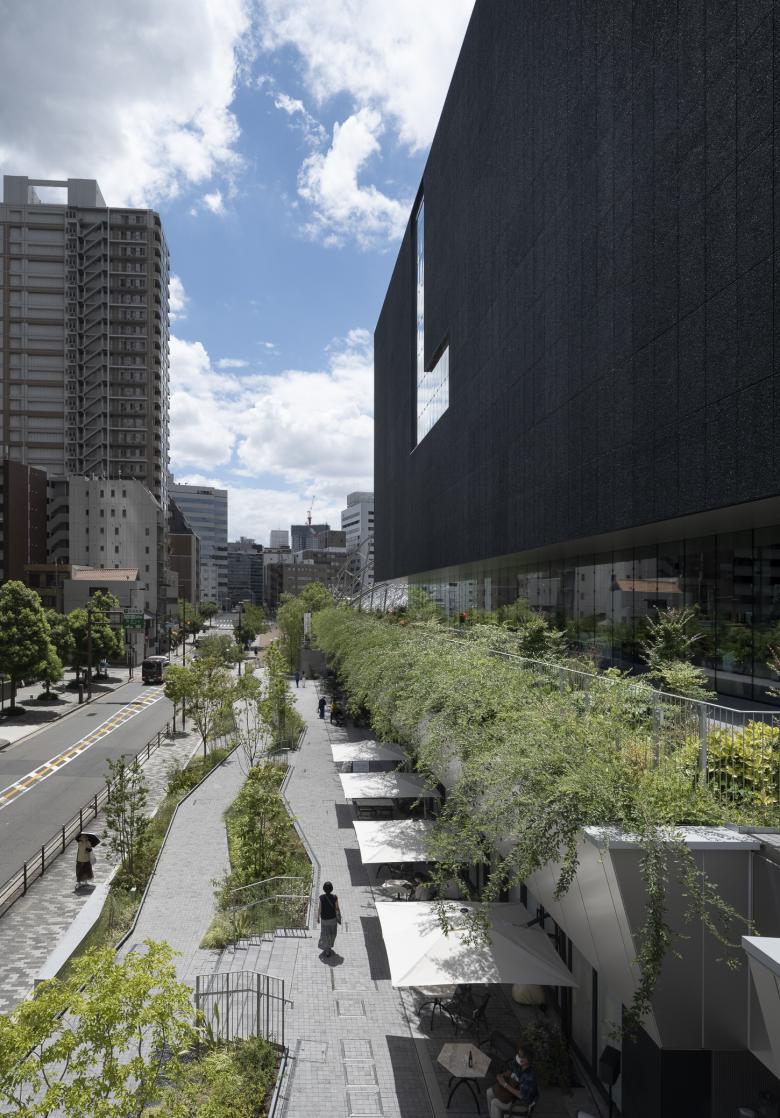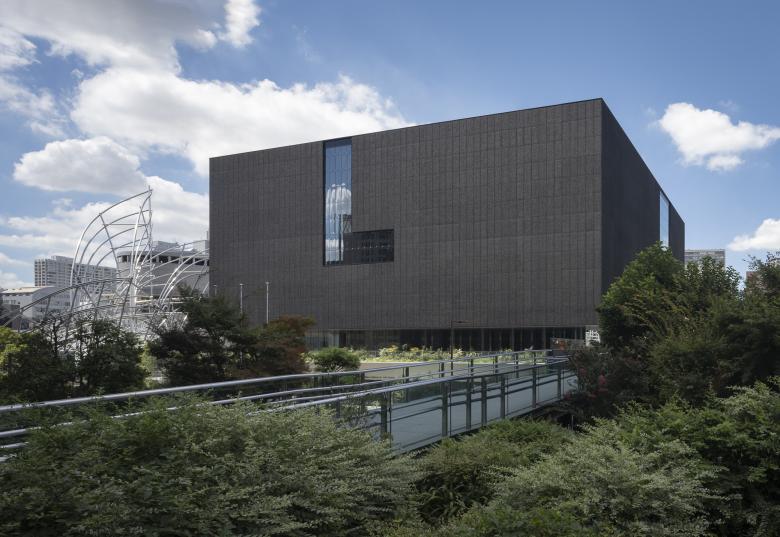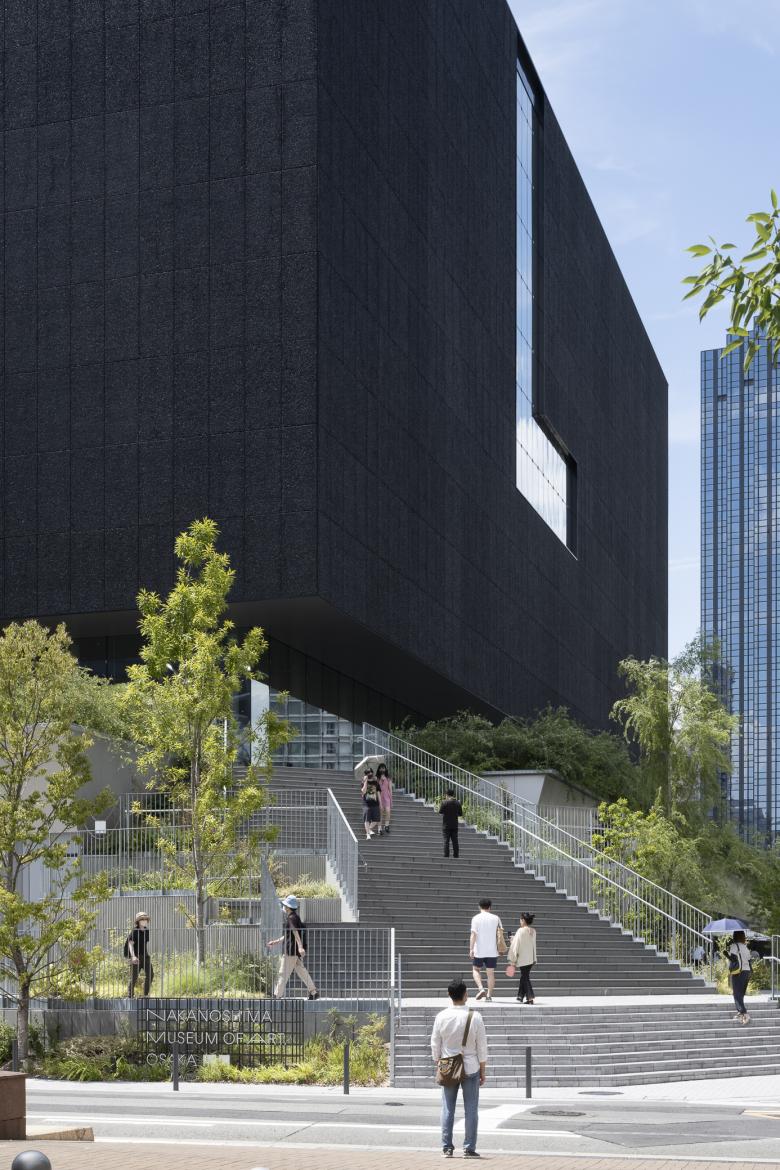Nakanoshima Museum of Art, Osaka
Nakanoshima, Osaka
- Architects
- Katsuhiko Endo Architect and Associates
- Location
- Nakanoshima, Osaka
- Year
- 2021
- Client
- Osaka City
As a museum open to the city
Osaka Nakanoshima, a sandbank lying between two rivers, the Dojima River and the Tosabori River, has been a thriving area for trading and commercial activities since the Middle Ages. It is also a former site of the Hiroshima clan’s warehouses, known for having a port called “Funairi”, where cargo ships could moor directly from the Dojima River. Since being selected as the best proposal in the open architectural competition held between 2016 and 2017, the construction was completed at the end of June 2021, after delivering services from design development and construction documentation through to contract administration.
Through site investigation, it was understood that the site was an important nexus between the east and west sides of Nakanoshima, thus, making it important to connect the flow of people and guide them in all directions. For this reason, instead of having a “front” of the building to create a specific route, a series of entrances were designed to welcome people in all directions. Moreover, as the Nakanoshima area is at risk of flooding, it was important to locate the artwork-related rooms on the 3rd floor and above, where damage from flooding could be physically avoided. The 1st and 2nd floors, on the other hand, were open to the city and offer a public space that could be used on a regular basis by people other than visitors to the museum.
The project consists of a 5-floors steel frame structure with a base isolation system and a parking space with an earthquake-resistant system, linked by expansion joints. The external spaces on the 1st and 2nd floors are continuous to the surrounding landscape, being conscious of enhancing urban accessibility. In order to make a seamless connection, it was necessary to eliminate the height difference to the surrounding site. As a result, on top of the “typography” of the 1st and 2nd floors, a clear geometric “architecture” with massive square facades were designed to express the museum as a floating formation in the city. The 2nd floor, which is a part of the terrain, is connected to the surrounding public facilities by a walkway deck. A connecting walkway is planned to be further extended to the west side of the building, contributing to the future liveliness of the Nakanoshima area.
Three-dimensional passages
From the outside spaces on the 1st and 2nd floors, visitors are led to the "Passage" inside the building. The word "Passage" and its function were specified in the design competition brief as "There shall be a Passage inside the building, which also serves as an entrance hall", but the interpretation of this concept was to be decided by the proposer. Considering the surroundings of the site, the 1st and 2nd floors are planned as public lobby spaces, similar to the concourse of a station. The escalator from the 2nd to the 4th floor takes visitors from the horizontal view of the 1st and 2nd floor to the vertical experience of the upper floors, where they then enter the exhibition rooms.
The Passage has been designed in such a way that the space is hollowed out from a large volume, creating a three-dimensional lobby space layered on each floor, changing its direction from east to west on the 4th floor and from north to south on the 5th floor. The cross-section of the passages is also the form of the openings in the four exterior walls. These passages on the upper floors not only function as lobbies in front of the exhibition rooms but also provide views of the Nakanoshima area from all four sides of the building, as the passages intersect in all directions.
It is intended that the passages between the exhibition rooms will create opportunities for visitors to look up at the city while viewing the exhibition, creating a new urban experience that goes beyond the mere enjoyment of art. The two large escalators that intersect each other in the passageway are oriented 90 degrees from one another so that the landing position to the 2nd and 4th floors are separated from each other. This creates a single line of flow between the two floors, which avoids the confusion of flow within the building.
A design of embracing life
The black exterior of the museum is made up of 609 precast concrete plates and the surface is filled with architectural concrete, a combination of crushed Iwate Gensho stone, crushed sand from Uji, Kyoto, black pigment, and a JIS standard lightweight concrete backing. The hardened surface is then roughed up by ultra-high pressure water jets before being coated with a highly concentrated inorganic silica-based compound layer to give weather resistance and protection from aggregates falling. The surface is carved to create micro-shades, giving the exterior a darker black, without relying on the color of the material.
On the contrary, the interior passages are finished with platinum silver louvers on the walls and ceiling. The louvers themselves are very simple, but the effect of the slightly red-tinged gray background paint, the natural light from the top light in the atrium and the different color temperatures of the interior lighting give each side of the passage a unique shade. The dimensions of this material are exactly the same on both walls and ceilings, and the spacing is set around a standard dimension (17.5mm) with 30 different types of concealed click-on fixings allowing for a tidy and non-breakable joint on all wall and ceiling surfaces. The design of the passages opens up the possibility of future exhibitions, not only in the galleries but also throughout the museum.
The light pouring through the openings of the black exterior walls is both a symbol and a sign of human activity expressed in relation to art and culture in Nakanoshima, Osaka. By designing these complex aspects embedded in a very simple form, we aim to explore what is the key factor in designing architecture today.
Related Projects
Magazine
-
蓮山居
1 week ago
-
宮前の家
2 weeks ago
-
Swiss Visions ─ 新世代の表現手法
3 weeks ago
-
庭園緑地の邸宅
3 weeks ago
-
根津のすみ
2 months ago
